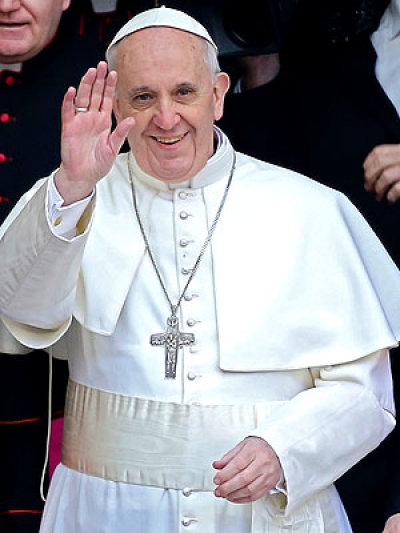Just how many individuals have ascended to the papacy throughout the centuries, a lineage stretching back to the very foundations of the Catholic Church? The answer, a testament to the enduring legacy of faith, is 266, each a figure who has shaped the course of Christianity and the world.
The papacy, a position of immense spiritual and historical significance, traces its roots to St. Peter, considered the first Pope. From him, the line of succession has continued, a continuous thread woven through the tapestry of time. The role of Pope, the Bishop of Rome, carries immense weight, not only within the Catholic Church but also in the broader global context. Each pontiff brings their unique perspective, their experiences, and their vision to the leadership of over a billion Catholics worldwide. Their decisions, their pronouncements, and even their personal qualities have influenced theological discussions, political landscapes, and the very fabric of society. The longevity of the papacy, spanning over two millennia, is a remarkable feat, demonstrating the enduring nature of the institution and its continued relevance in the modern world. The Vatican meticulously documents each papal reign, preserving records of their lives, actions, and impact.
To further illuminate this subject, we present a comprehensive overview of the Popes, incorporating key biographical and professional details, as well as links to reliable sources for additional information:
| Attribute | Details |
|---|---|
| Name | Pope Francis (Born Jorge Mario Bergoglio) |
| Birth Date | December 17, 1936 |
| Birthplace | Buenos Aires, Argentina |
| Nationality | Argentine |
| Papal Name | Francis |
| Elected | March 13, 2013 |
| Predecessor | Pope Benedict XVI |
| Profession | Priest, Archbishop |
| Education | Master of Arts in Philosophy, Chemistry |
| Ordination | December 13, 1969 |
| Episcopal Consecration | June 27, 1992 |
| Previous Positions | Archbishop of Buenos Aires (1998-2013), Cardinal (2001), Provincial Superior of the Society of Jesus in Argentina (1980-1986) |
| Known For | Emphasis on mercy, social justice, and environmentalism. First Pope from the Americas. |
| Significant Actions | Published encyclicals such as Laudato si' and Fratelli Tutti which covered topics related to environment and fraternity. |
| Current Status | Reigning Pope |
| Official Website for Reference | The Holy See - The Vatican |
The Vatican itself, the heart of the Catholic Church, offers detailed documentation of each Pope. The official list, carefully maintained and constantly updated, reflects the unwavering dedication to historical accuracy. This catalog includes not only the names and dates of each Pope but also significant events during their reign. This list goes all the way back to St. Peter the Apostle.
The impact of the papacy extends far beyond the confines of the Vatican. Papal pronouncements, known as encyclicals, and apostolic letters have shaped theological discourse, addressed pressing social issues, and guided the faithful across the globe. Pope Francis, for instance, is known for his focus on environmentalism, poverty, and social justice. His encyclicals have served as significant contributions to ongoing conversations about the role of the Church in the modern world.
The inclusion of “antipopes” adds another layer of complexity to the historical narrative. These individuals, who claimed the papal title but were not legitimately elected, serve as a reminder of the power struggles and political machinations that have, at times, intersected with the Church's spiritual mission. The existence of antipopes underscores the tumultuous periods in Church history and the importance of discerning the legitimate line of succession. It is necessary to remember that there have been 37 antipopes to date.
The historical record clearly shows the chronology of the Popes. The first Pope, Saint Peter, marks the beginning of this lengthy succession of spiritual leaders. The meticulous organization of the lists, starting with the earliest Popes and proceeding to the current pontiff, gives valuable insights into the Church's development.
The selection process itself, the conclave, is an event steeped in tradition and ritual. Cardinals from around the world gather in the Sistine Chapel, and through a process of prayer, deliberation, and voting, they choose the new leader of the Church. The announcement of the new Pope is an event watched around the world, symbolizing both continuity and the promise of a new era.
Throughout the extensive history of the papacy, geographic origins of the Popes offer insights into the development and expansion of the Catholic Church. While the majority of Popes have originated in Europe, particularly Italy, the election of Pope Francis, who was born in Argentina, highlights the Church's increasing global presence. This diversity reflects the Church's embrace of all people and cultures and its ability to adapt to the changing world. Pope Francis's election marked a significant moment in history, as he was the first Pope from the Americas and the first born outside of Europe since the 8th-century Pope Gregory III.
The papacy continues to evolve, adapting to the challenges and opportunities of the 21st century. While the core tenets of the faith remain constant, the Church must navigate a complex world characterized by rapid technological advancements, social transformations, and shifting cultural values. Each Pope contributes to this ongoing process, shaping the Church's response to contemporary issues and ensuring its relevance for future generations. The role of the papacy will keep evolving while maintaining the sacred core values of the institution.
Lists of Popes, such as those available on Vatican websites and other reputable sources, provide invaluable resources for historical research and theological study. These lists offer a chronological overview of the papacy, making it easy to track the succession of Popes and to understand the events that shaped their reigns. Some discrepancies may arise in different lists, such as around the papacy of Stephen II, who died before his consecration. However, the core historical framework, as provided by the Vatican, continues to be an important asset for understanding the history of the Catholic Church.



